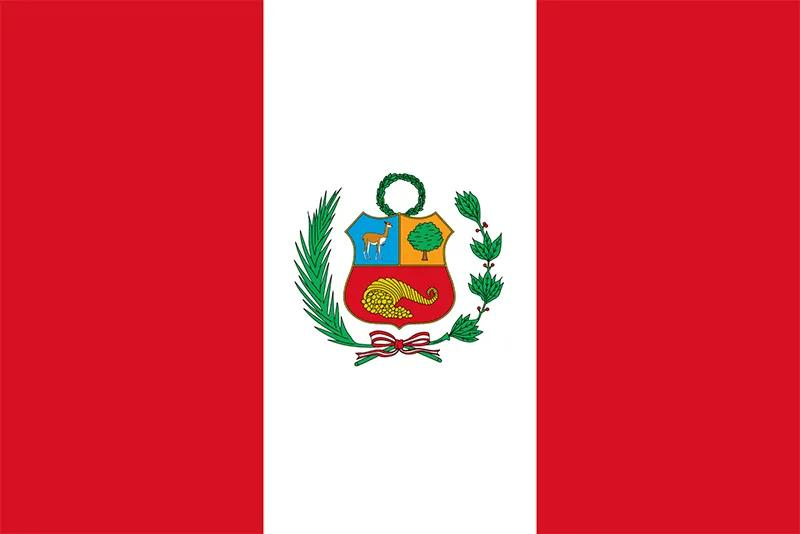The flag of Peru, with its distinctive design and rich symbolism, serves as a powerful representation of the nation’s history, identity, and pride. In this comprehensive guide, we delve into the intricate details of the Peruvian flag, exploring its origins, meaning, and significance.
Origins and Evolution
Historians can trace the history of the Peruvian flag back to the early days of the struggle for independence from Spanish colonial rule. The first national flag of Peru was officially adopted on February 25, 1825, shortly after the country gained independence. This original flag featured three horizontal stripes – red, white, and red – with the coat of their arms in the center.
Over the years, the design of the Peruvian flag has undergone several modifications, reflecting the country’s changing political landscape and cultural influences. However, the fundamental elements of the flag – the colors and the coat of arms – have remained constant, symbolizing the enduring spirit of the Peruvian people.
Symbolism and Meaning
Each element of the Peruvian flag carries deep symbolic significance:
Colors
- Red: represents the blood shed by those who fought for Peru’s independence and the bravery of its people.
- White: symbolizes peace, purity, and the snow-capped peaks of the Andes Mountains.
- Coat of arms features a wreath of palm and laurel branches, symbolizing victory and honor, with a centered shield depicting national treasures such as the vicuña, cinchona tree, and cornucopia overflowing with coins.
Cultural Significance
The Peruvian flag holds immense cultural significance, serving as a unifying symbol for the diverse population of Peru. During national celebrations, ceremonies, and sporting events, Peruvians proudly display the flag, fostering a sense of patriotism and solidarity both at home and abroad.
Protocol and Etiquette
Established protocol dictates treating the Peruvian flag with the utmost respect and dignity. One should hoist the flag briskly and lower it ceremoniously, ensuring it never touches the ground or any other object beneath it. Additionally, one should never fly the flag upside down, as it is considered a sign of distress or disrespect.
Protector of Sovereignty and Freedom
As Peru continues to chart its course in the 21st century, the flag stands as a guardian of the nation’s sovereignty and democratic ideals. It serves as a reminder of the sacrifices made by past generations and inspires future generations to uphold the principles of liberty, equality, and justice.
Peru Flag: A Beacon of Hope
In times of adversity and triumph alike, it waves proudly, offering solace, strength, and hope to its people. It is a symbol of resilience, unity, and optimism, reminding Peruvians of their shared heritage and collective destiny.
FAQs
What do the colors of the Peru flag represent?
The red in this flag symbolizes the blood shed by patriots, white signifies purity and peace, while the coat of arms embodies national pride and heritage.
Who designed the Peru flag?
Peruvian revolutionaries during the struggle for independence in the 19th century are attributed with creating this flag, although the precise designer remains unknown.
What is the significance of the national coat of arms on the Peru flag?
The national coat of arms on the flag represents the country’s natural beauty, biodiversity, and historical legacy, encapsulating its rich heritage and cultural identity.
Why are there three vertical stripes on the Peru flag?
The three vertical stripes on the flag represent the nation’s three geographic regions – the coast, the highlands, and the jungle – while also symbolizing the unity and diversity of its people.
How often is the Peru flag hoisted?
The people of Peru proudly hoist the flag across the country on various occasions, including national holidays, official ceremonies, and cultural events, using it as a symbol of unity and pride.
Is the Peru flag subject to any regulations or protocols?
The government governs the Peru flag with specific regulations and protocols, dictating its proper display, handling, and usage to ensure respect and reverence.
Conclusion
In conclusion, the Peru flag stands as a timeless emblem of the nation’s identity, embodying its history, culture, and aspirations. From its humble origins to its enduring legacy, the flag continues to unite, inspire, and uplift the people of Peru, serving as a beacon of hope and unity for generations to come.

